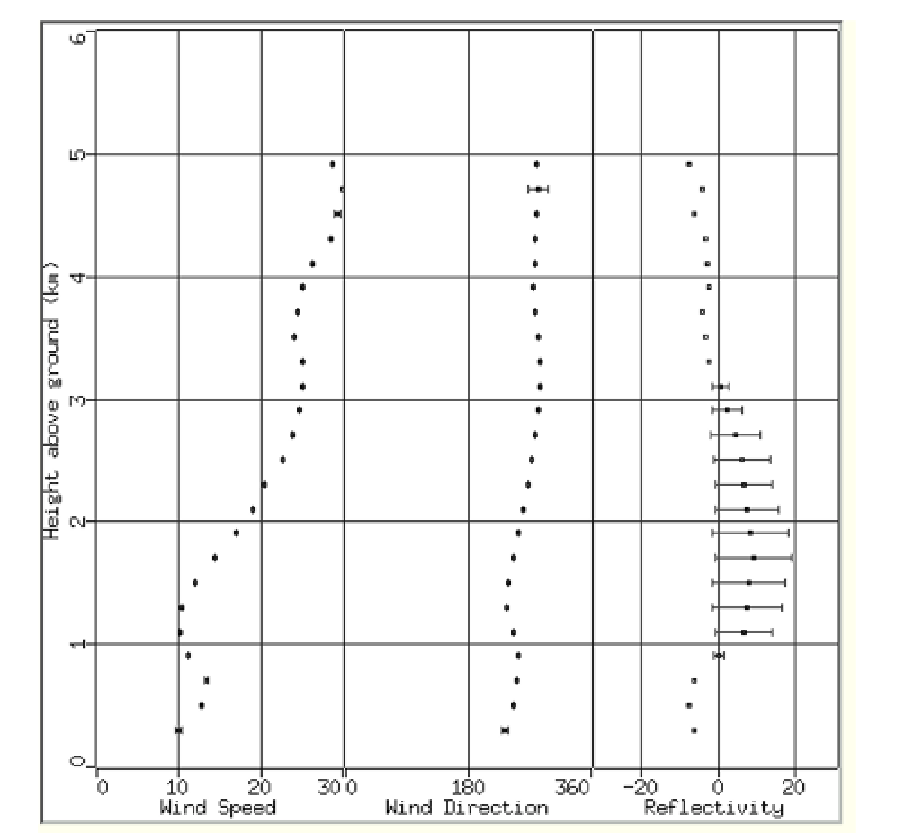Geoscience Reference
In-Depth Information
Fig. 9. VVP sounding. Windspeed on left, wind direction in middle and reflectivity on right.
6.2 Lake effect snow
Lake effect snow is a phenomenon observed regularly around open water surfaces in cold
weather. The name originated from weather phenomena around the Great Lakes of North
America, but it is also observed around bays and straits of sea and great rivers. Lake-effect
snowstorms get their energy from the temperature difference between the relatively warm
open water and very cold, continental air blowing over the water. These provide the most
spectacular outbreaks of boundary layer convection in winter (Markowski & Richardson,
2010).
Markowski and Richardson (2010) mention that the convective clouds associated with lake-
effect precipitation can be several kilometres deep. However, even shallower lake-effect
clouds can produce significant amounts of snowfall (see Fig. 10), and these shallow yet
intense clouds present challenges to the design of a radar network in coastal areas in a cold
climate.

